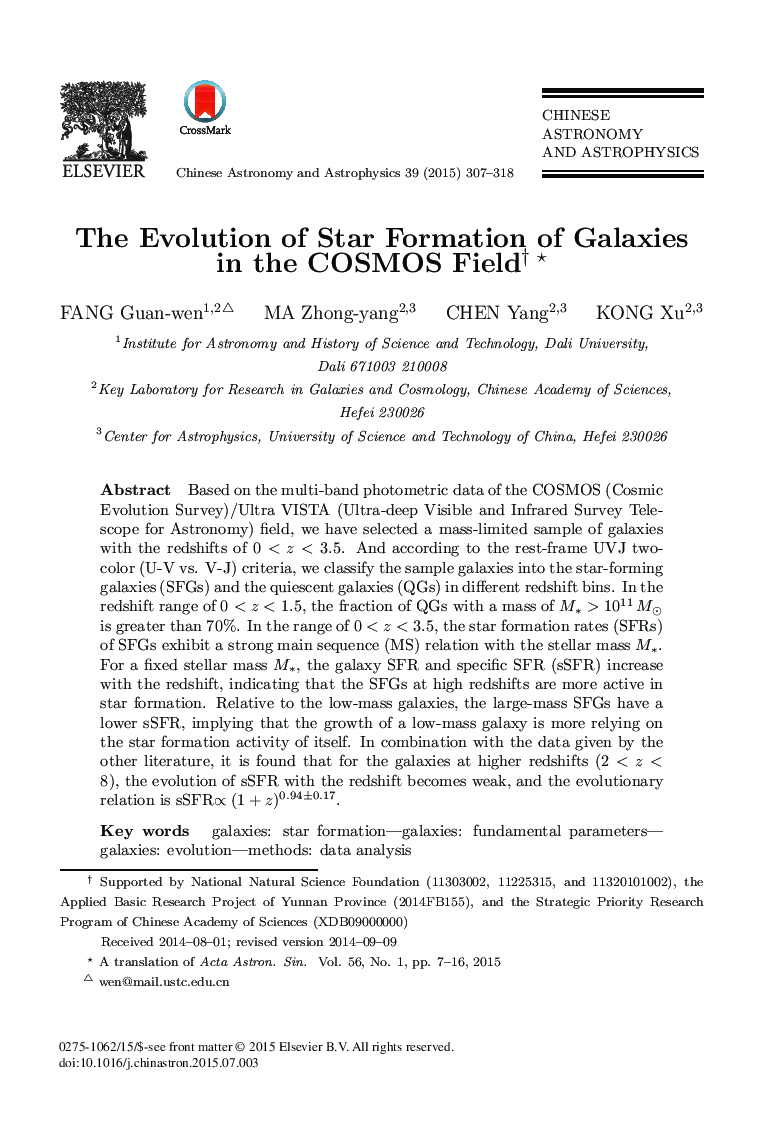| Article ID | Journal | Published Year | Pages | File Type |
|---|---|---|---|---|
| 1771707 | Chinese Astronomy and Astrophysics | 2015 | 12 Pages |
Based on the multi-band photometric data of the COSMOS (Cosmic Evolution Survey)/Ultra VISTA (Ultra-deep Visible and Infrared Survey Telescope for Astronomy) field, we have selected a mass-limited sample of galaxies with the redshifts of 0 < z < 3.5. And according to the rest-frame UVJ twocolor (U-V vs. V-J) criteria, we classify the sample galaxies into the star-forming galaxies (SFGs) and the quiescent galaxies (QGs) in different redshift bins. In the redshift range of 0 < z < 1.5, the fraction of QGs with a mass of M* > 1011Mʘ is greater than 70%. In the range of 0 < z < 3.5, the star formation rates (SFRs) of SFGs exhibit a strong main sequence (MS) relation with the stellar mass M*. For a fixed stellar mass M*, the galaxy SFR and specific SFR (sSFR) increase with the redshift, indicating that the SFGs at high redshifts are more active in star formation. Relative to the low-mass galaxies, the large-mass SFGs have a lower sSFR, implying that the growth of a low-mass galaxy is more relying on the star formation activity of itself. In combination with the data given by the other literature, it is found that for the galaxies at higher redshifts (2 < z < 8), the evolution of sSFR with the redshift becomes weak, and the evolutionary relation is sSFR∝ (1 + z)0.94±0.17.
